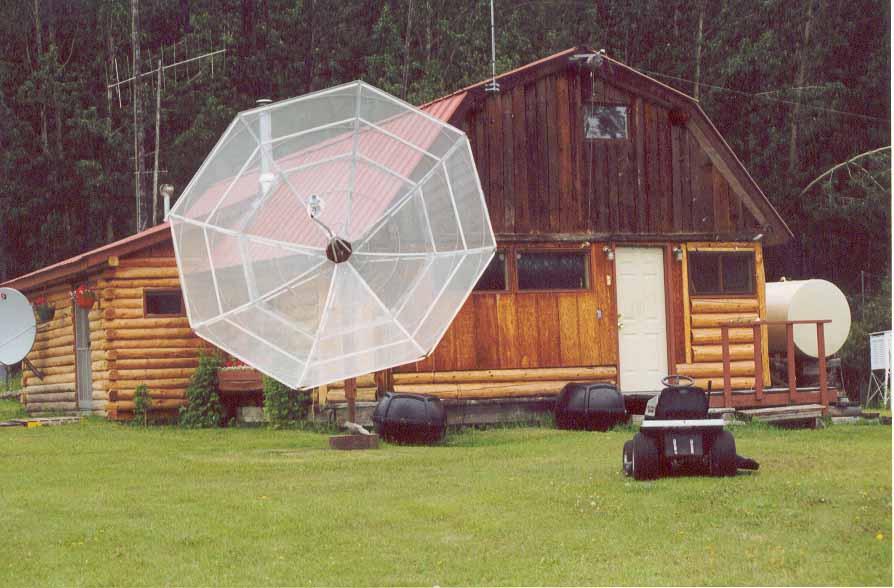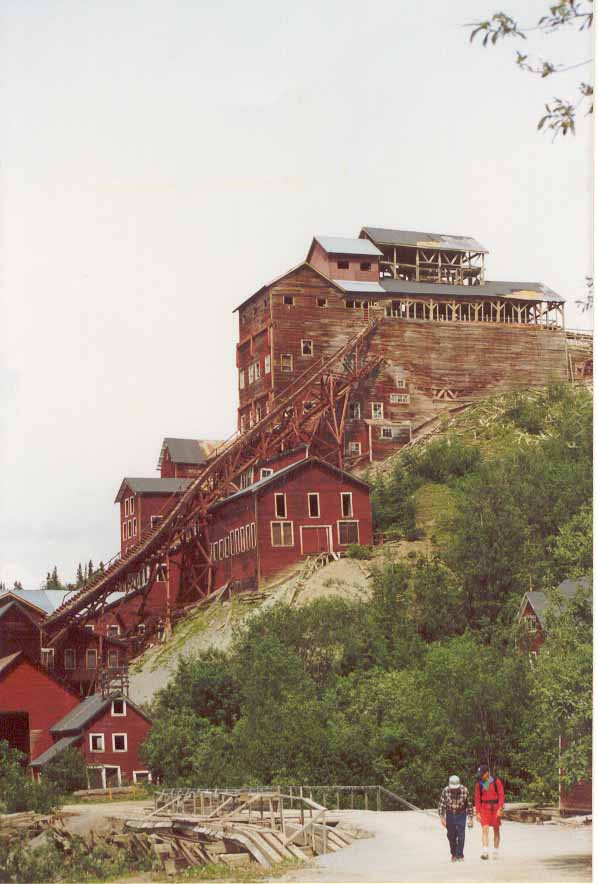Welcome to McCarthy, gateway to Wrangell-St. Elias National Park. I spent three days in McCarthy. You have to really want to go to McCarthy to get there. The only road leading to McCarthy is a one-lane gravel road that rattled my teeth pretty good (and my Ford Escape, my apologies to Hertz…I'm sure they're not happy with me). The washboard effect in some places is terrible, but I have to say the CD player didn't miss a beat. There are long stretches on that road where your top speed doesn't exceed 5 mph, and the rest of the road is as bad as anything that can be found in Dallas. (No apologies to Mayors Kirk and Miller. It's the Alaska wilderness…the roads are SUPPOSED to be bad.) It took three hours to drive the 60 miles from Chitina, where the pavement ends, to McCarthy.
I stayed at the Wrangell-St. Elias News B&B , hosts Rick and Bonnie Kenyon.
Please excuse the fuzzy picture. My camera was less than cooperative on this trip. I made my reservations there sight unseen. I had my choice of either one of two cabins .
Or the travel trailer.
I
chose the trailer because it's fully contained, including shower. My
advice...go with one of the cabins. The trailer is convenient because
you don't have to run to the shower house in the morning, but the cabins
appear more comfortable.
As you can see below, the Kenyon's have put a lot of work into their spread. You'd be hard pressed to feel like you're in the middle of the Alaska wilderness...but the mosquitoes will provide you with a not-so-gentle reminder.

As
for the park, if you're looking for an Alaska Wilderness experience without
really roughing it, Wrangell-St. Elias is a good place to be. On the
other hand, if you want a TRUE Alaska Wilderness experience, complete with
fly-in and back country hiking and camping, you'll find it here,
too. 
The
Kennicott Mines are pretty incredible. The
facility is huge, complete with bunkhouse buildings, hospital, general store,
and other out buildings. It was
the largest producing copper mine in the world at the time, all built at the
turn of the century…the 20th century, that is.
It was quite an
engineering fete, even more mind-boggling when you stop to consider how remote
the area is and the conditions under which they had to operate.

For example, the Kennicott River runs close to the mine and it floods
every year. There's a unique
natural phenomenon that occurs every summer that washed out the railroad
bridge to the mine. The river,
way up stream where it's only a stream, runs under the Root Glacier and in winter it
all freezes and the water gets dammed up under the glacier, creating a lake.
At some point during the summer, and this year it happened the day I
was there, the lake "breaks" and bubbles up under the glacier and
breaks out just downstream, creating a huge geyser, sending huge volumes of water
and ice chunks down the river that washed out the train trestle.
This happened every year, and every year materials were stockpiled to rebuild the bridge
while the mine was shut down for
about a week for maintenance.
These
days there's a foot bridge (above) that crosses just downstream from where the train
trestle used to be. It was pretty awesome standing there watching the volume of
water running underneath. You can
feel the rumble of the rushing water and every now and then you can hear a
chunk of ice hit the bridge pilings…pretty awesome!
For
those arm chair visitors like me, the big attraction is the Kennicott
Mines.
But one day will pretty much take care of that. Beyond the mines,
there's downtown McCarthy.

